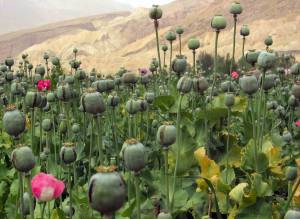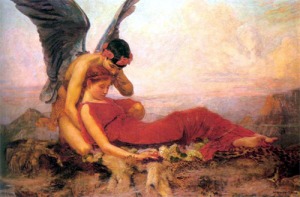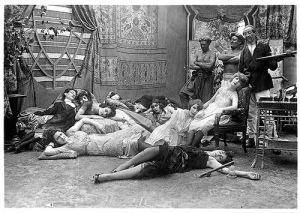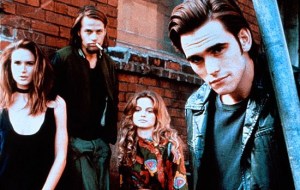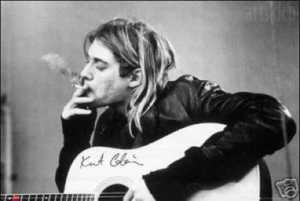Our English word for drug comes from the French word, ‘drogue.’ La drogue signified merchandise, but not just any merchandise commonly found in the markets of seventeenth-century Marseilles, France. This merchandise, like the other dangerous concoctions around the world, came from the Orient, or Asia. ‘Epiciers,’ or the spice sellers, legally sold this occult, hard stuff.
This drogue was a peculiarly special medicine, and not just for the ailing. It was really for those unfortunate, bedridden sick, dying from terrible and unknown pains. La drogue always sat ready for its desperate takers. It willfully took flight with its sacrificial victims onto the sweet ride of death.
Writing of death, the decade of the 1830s was an exceptional period for the ruthless scavenger cloaked in the monk’s robe, sporting the skull face and carrying the European peasant’s scythe. But this look of death was a bit more distinct and sensual. It didn’t fume the rancid Euro-sailor reek that made most foreigners almost vomit. It smelled more like a long pipe of sweet-smelling tar mixed with tobacco, or even cannabis. Accompanying this drug of the sweet death, was a deep aroma of British gunpowder and the bad death.
The greatest drug dealers in human history have not been the Colombian or Mexican narcos-cartels, nor the Afghan poppy bosses of the Golden Crescent, nor even the Kuomintang plant lords of the Golden Triangle; instead, the greatest drug dealers in human history have been two humongous Empires found in world history: the Second British Empire, (1783-1956), and the current Amerikan Empire, (the USA), with special emphases on its intelligence services, both the CIA and the DEA, or the Drug Enforcement Administration.
Within the dens and markets on the dirty South Pacific sea, off the coast of China, such as Hong Kong, existed the Imperial Trade. The time was around the 1830s. The British ran the Trade and controlled most the monopolies on the Trade. Other Europeans and European-colonials also participated in the madness, and just like the days of African slavery.
That sinister trade in humans meant the Black Gold kidnapped on the ‘dark continent,’ and then murdered en mass on the American continents during the 1700s. But this latter trade flourished under a stickier commodity.
The Qing Dynasty in China could not tolerate such attacks to its honor and dignity. The Europeans had slowly moved into the ports and cities, like Shanghai. Not only did the smelly and untrustworthy Europeans move in, but they stayed and demanded special ‘rights,’ or legal privileges for their dopey merchants.
The Euros also commanded special monopolies on their sacred commodities. The British, French, Dutch, Americans, Germans, Italians, Russians, and other flush faced monstrosities walked the ancient streets of the Chinese Emperor like demons on parade. The other devious interlopers were Japanese merchants.
The Qing Emperor decided to act and demanded that the British respect his law banning the importation of this other Black Gold, opium, and this time cultivated in Iran, Afghanistan and India. This Black Gold of the nineteenth-century had the infamous name of the Opium Trade.
Like other European colonial thugs before and after, the British East India Company refused to respect the Chinese law in the land of China. Did the British East India Company respect the Americans’ anti-Tea tax rebellions during the Revolutionary War in 1776?
The British already had the tea, and very soon, tea drinking became part of British middle class culture, with creamy milk added, and which is still widely popular in Britain today. But what about the millions of Chinese addicts visiting the dirty dens infested with bed bugs, so they could the smoke the magical pipe and hopefully – die the sweet death?
Britain weighed its options carefully, and decided that it could defeat the once great Chinese Qing Emperor. They were right. The British fought at least two full-scale wars against the corrupt and decadent, Chinese imperial court, murdering 50,000 Chinese anti-opium fighters with British rifle musket fire. The evil joke was on the Chinese, since they had first invented gunpowder about a thousand years ago! The British monopolists also took the port island city of Hong Kong, which they would not return to China until 1997.
China meanwhile began to drown within its own loss of face. The Taiping Rebellion would burst against the hated and dishonest European ‘buyers and sellers.’ Even with that defeat, the Chinese organized themselves into even more powerful secret societies, such as the Boxers, which also led to a full-on rebellion – and later, the Chinese Nationalist Revolution. With the Communist victory of 1949, the Chinese finally instituted real land reforms and ousted the European invaders from its territories – except for the cities of Hong Kong and Macao.
The worst slap in the face for China were the millions of pathetic addicts that lost their wills to live. How many lives and dignities snuffed themselves out for the light smoke of the sweet death?
But the colonial murderers and liars had the last laughs pitted against them. The Chinese opium den culture spread throughout the world’s cultures. Chinatowns opened up flea bag hotels for desperate Chinese workers trying to make some capital through slave wage work across the globe. Within these ‘Chinatowns,’ opium dens flourished, from Lima, Peru to San Francisco, California, from London to Penang, from Paris to Bangkok. A new class of ‘druggie’ entered the darkened smoking lairs.
In the late nineteenth-century, the rooms reeked of the strange blackened tar smoke, the interior decor was of dreary stained long mirrors, red burgundy-brown sienna peeling rice paper, and on the floor red burgundy, phony silk pillows and cushions. If the place had more ‘class,’ then they added dressing partitions and fans for the customers.
The customers were often Europeans, of both sexes, and many came from good class backgrounds and education. Some of them seemed to have that ‘bohemian’ look on them. What attracted those Euro-bohemians to the smoky dens once found in the rat and bug infested holes of Hong Kong?
Opium attracted them – and those sensual Chinese dens were only a small part of the Oriental exotic ambience. Opium, Morphine, Heroin and opium’s hundreds of both illegitimate and legitimate offspring, have offered to the world the peaceful nodding sleep, the deliverance from acute human suffering, both physical and mental, and the sweet death for the melancholic and hard life. The ultimate narcotic is for the dying, for those that desperately want to die, and for those that want to explore their own marvelous and sensual deaths.
For the evil empires of our modern world, and especially for the Amerikan Empire of Sociopaths, opium and its derivatives, with the refined genius of the permanently illegal Heroin, have become golden weapons in the marked arms of intelligence agencies. They are the finest weapons in the subduing of armies, of entire dangerous populations – and they have worked properly every single time – and still do until this very day.
Heroin still retains its status as the artist, traveler and outlaw drug in the Euro-American world of bohemians and rebels. For most of Heroin’s history, most addicts were often men. Yet recently, thousands of attractive young women, and often in their teens, have discovered the occult power of heroin in successfully controlling body weight. Only heroin can offer the female desire for the eating of sweets while retaining the skinny body frame. The sight of a woman’s dark and scrawny heroin body, or ‘heroin chic,’ offers the most profound sensual attraction of the dangerous ‘fashion model.’ Such is the strange and long history of the poppy plant first cultivated and traded in Mesopotamian Asia about 5,000 years ago.
The Sumerians traders referred to the poppies as the joy plants. Their brisk trade in joy, and the sweet death, made them welcome commodities in Ancient Egypt, the Phoenician coastal cities, and within the Greek city states. The ancient medical writer and philosopher, Hippocrates, referred to this plant as a good medicinal herb against pain, internal disorders and acute diarrhea.
Islamic merchants controlled the first opium monopoly during the medieval period, (800-1600 A.D.). Meanwhile, Europeans feared the drug’s ‘oriental’ powers. Opium growing spread to the Mediterranean climate, and especially into Egypt and Turkey, with another lethal commoditized drug, sugar.
Things changed swiftly during the Renaissance period, when the Portuguese traders, and later Dutch merchants, started to cut into the great Muslim traders’ monopoly of the plant. The Dutch even invented the offshoot of Opium, Laudanum, which mixed the poppies in liquor in order to deaden the bitter taste.
In the 1800s, a German doctor manufactured another derivative of Opium, called Morphine, named after the Greek God of sleep, Morpheus. Official medical doctors still legally use this drug as the last medicine for the dying. At the end of the nineteenth-century, a scientist working for the Bayer Company, would find the most powerful derivative of Morphine, called Heroin. In the early 1900s, when the Eugenics ideology moved into center stage, European and American governments banned the opiate serums.
Heroin has lately become the weapon exemplar for intelligence agencies, and especially in the US. After the loss of China in 1949, the western Kuomintang, or the KMT, helped by the CIA, fled into the Golden Triangle zone, (northern Thailand, Burma and Laos), and began to fund their terrorism against Communist China with Heroin profits. The eastern KMT took over the island of Formosa. The KMT thugs renamed it Taiwan, and established a notorious dictatorship continually supported by the Amerikan Empire as a cheap manufacturing base, and which still survives today.
What to do with all the Heroin production in the 1950s? The Amerikan Empire intelligence complex flooded African-American poor, urban neighborhoods with the dope, in order to destroy the growing militancy in the ghettos, such as the Copts and the Nation of Islam.
The CIA did not stop here. During the Amerikan Imperial invasion of Indochina, (1961-1975), the intelligence assets began the Air America scheme to transport Heroin from the Golden Triangle region and make some incredible profits. Where did they drop the dope in late 60s and early 70s? Again, they hit the African-American, poor urban areas hard and the urban Latino communities. The Black Panthers tried to fight back, but the FBI had them exterminated. The dope also found its street cred among radicalized returning US veterans and in the countercultural, hipster zones, such as the Lower East Side, NYC, and in Haight-Ashbury, San Francisco. LSD-Acid had its days, and so the dope killed the fun.
In the 1980s, while the CIA and NSA worked with major Crack-Cocaine importers from Latin America, they helped restart the Golden Crescent zone of Afghanistan and Pakistan, in order to debilitate the Russian armies fighting the Mujahedeen fighters.
And now, with the Amerikan imperial invasion and occupation of Afghanistan, Heroin is showing up everywhere. The Amerikan Empire’s intelligence agencies are dumping the stuff across the small remaining outposts of middle class, ‘white skin privilege’ Amerika. They don’t care where it goes anymore.
Of course, they are still getting help from their narco brothers across the southern border, and from every Mafia group found inside and outside of the US, including ‘the Kosovo Liberation Army,’ the same group of hired thugs the Amerikan Empire supported against Serbia in the 1990s. Joy to the imperial state and mafia criminals!
Other European intelligence agencies have also used the secretive dope weapon. When Italy and Germany began to heat up with youth resistance in the 1970s, such as the RAF, or the Red Army Faction, and the Red Brigades, all of sudden, cheap dope hit the youth scene. When nationalist youth fought furiously in Northern Ireland and in the Basque Country in the 1980s, the IRA and ETA nationalist fighting wings had to start hunting the dope pushers. Greece is the most youth radicalized country in Europe, and there, copious amounts of cheap dope flood the urban streets of Athens.
Why are rebellious youth attracted to the product in the first place? The answers lie in the sensuality of the sweet death, eternal sleep, permanent illegality of the most potent narcotic, and the heroin chic montage of eternal skinniness and authentic cool rebellion.
From the nineteenth-century, European Bohemia began to dabble inside the Opium dens. Some became rabid smokers, while others became ‘opium eaters.’ Oscar Wilde vividly described a literary scene where the eternally young, Dorian Gray, regularly visited the ‘London clubs.’ The French Romantic poet, Charles Baudelaire, fell into a severe Opium addiction while living in decadent Paris. He mellowed out his withdrawals with copious Hashish smoking. Other romantic Opiate dabblers were Thomas de Quincey, Lord Byron, Percy Shelley and Elizabeth Barrett Browning.
In the twentieth-century, when music took hold of European and American youth imagination with jazz, rock and its subgenres of metal, grunge and punk, Heroin embraced its newfound artist friends. Almost the entirety of America’s great jazz musicians got hooked into the Heroin miasma, such as Coltrane, Parker, Baker, Monk, Davis, Charles and Holliday. With Rock it has been about the same, and it is still this way. Some of the tragic deaths of numerous rock stars have had their connections to the Opiate serum. Even Hollywood actors have taken the Heroin plunge, such as Alma Rubens, Wallace Reid, Bela Lugosi, Montgomery Clift, John Belushi, Robert Pastorelli, River Phoenix, Chris Farley and Phillip Seymour.
Writing about the movies, an entire subgenre of cinema has explored the cool, pretty junkie, illegal drug, heroin subculture of squatters, traveling addicts, outlaws and tramps, such as ‘Trainspotting, Sid and Nancy, Candy, The Panic in Needle Park, Jesus’ Son, Requiem for a Dream, Gia, Christiana F, Gridlock’d, Basketball Diaries, Permanent Midnight,’ and ‘Drugstore Cowboy.’
Most importantly, Heroin has recently found another home among female models and handsome young women that don’t want to deal with the contemporary mental and physical pains of having to continually losing weight and staying thin. They have discovered that regular yoga workouts and vegetarian fad diets require enormous amounts of personal discipline and struggle. They are too sensitive for such fighting, so they have uncovered another secret weapon to keeping thin – the romantic life of the fringe drug addict. Heroin chic truly is chic, and in our modern world, it is here to stay.
And so here is the strange and fascinating history of the Opium drug. Across the globe millions of working class addicts have to struggle daily in order to feed their brutal habits and avoid the horrible withdrawals. Wealthy addicts have their stable connects, can simply shoot the medicine in their rooms, and die peacefully in their homes. Official doctors can prescribe various ‘legal opiates,’ such as Codeine, Vicodin, Fentanyl, Demerol, Suboxone, Percodan, Oxycontin and Dilaudid; while some unfortunate street peddlers now rot in the Amerikan gulag.
Its origins, like Cannabis, come from the exotic, mystical and occult Orient. At present, Heroin flourishes everywhere on the planet. A strange social concoction of artists, intelligence agents, musicians, disreputable politicians, poets, mafiosi and models have fallen in love with the poppy plant, yet Heroin offers the deep mental-physical release to all that use it. This utopia mixed with exaltation ultimately explains its rampant popularity worldwide. And finally, it relieves all physical and mental suffering – leading us all to the sweet death.
